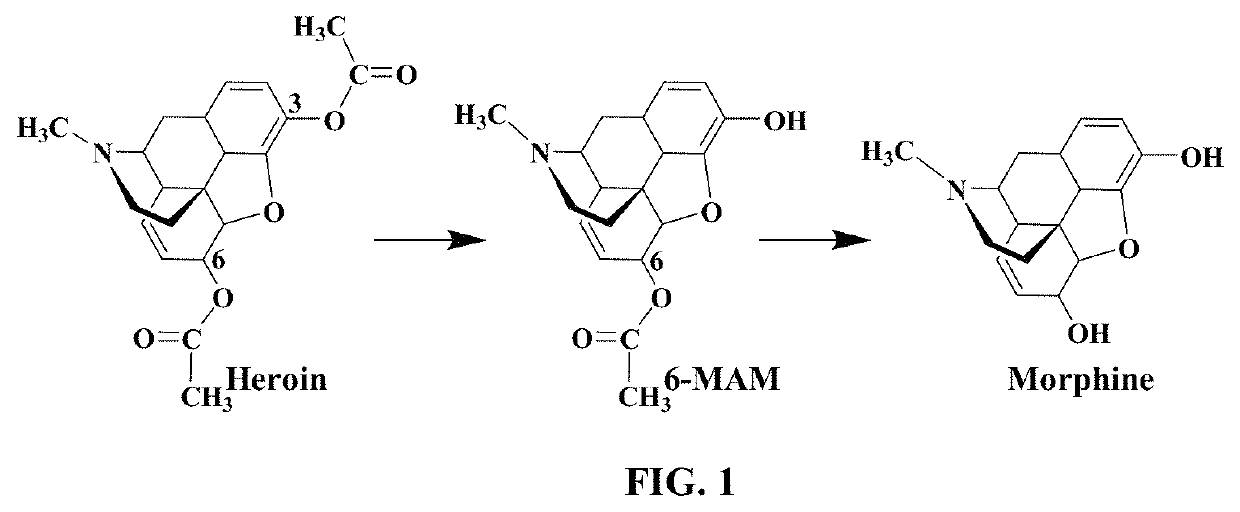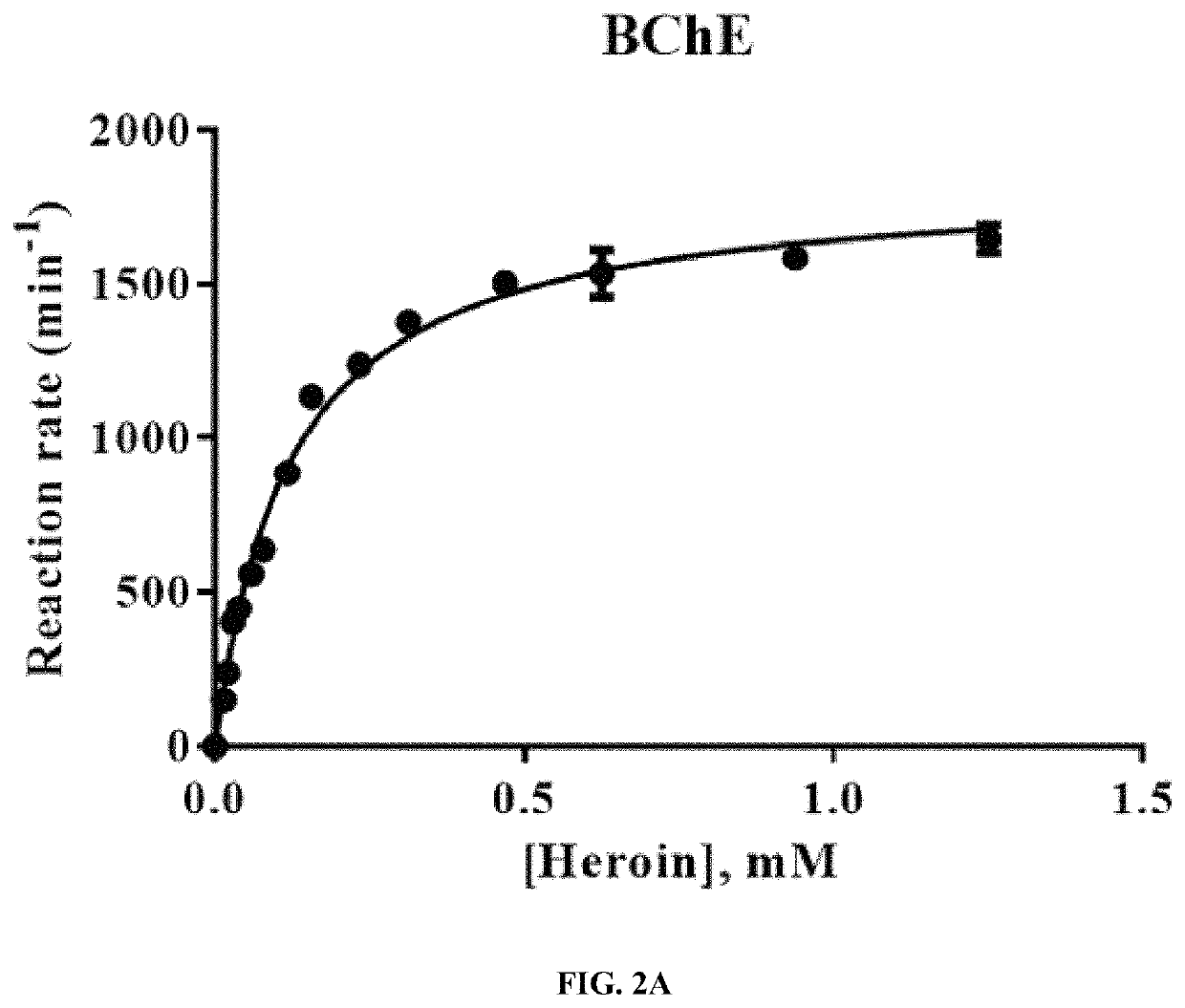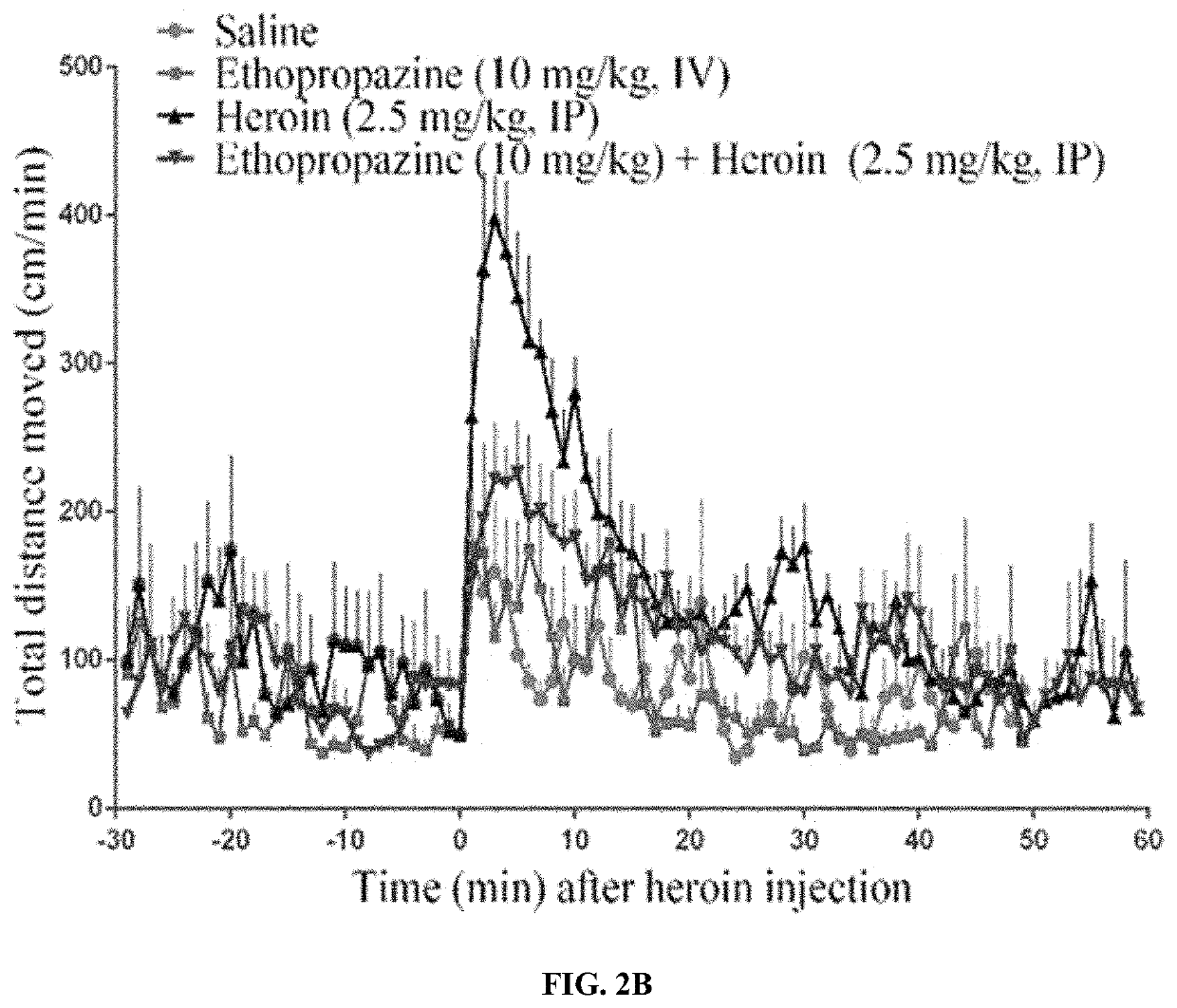Butyrylcholinesterase inhibitors for treatment of opioid use disorder
a technology of butyrylcholinesterase and inhibitors, which is applied in the field of butyrylcholinesterase inhibitors and methods for treating opioid use disorders, can solve the problems of increasing heroin abuse, reducing overall opioid overdose deaths, and being known as a national crisis for opioid abuse, so as to reduce opioid craving, reduce opioid withdrawal symptoms, and reduce opioid use.
- Summary
- Abstract
- Description
- Claims
- Application Information
AI Technical Summary
Benefits of technology
Problems solved by technology
Method used
Image
Examples
example 1
Opioid Compounds
[0058]The purified recombinant human BChE protein was prepared as in a previous study.27 Briefly, the BChE protein was expressed in CHO—S cells, and the secreted enzyme in the culture medium was purified by a two-step approach, including ion exchange chromatography using QFF anion exchanger and affinity chromatography using procainamide-sepharose. The purified protein was stored at −80° C. before the use. Heroin and its metabolite 6-MAM were provided by the National Institute on Drug Abuse (NIDA) Drug Supply Program (Bethesda, Md.). All other supplies (including ethopropazine and naltrexone) were purchased from Sigma-Aldrich (St. Louis, Mo.).
example 2
udies
[0059]Male CD-1 mice (28-32 g) were ordered from Harlan (Harlan, Indianapolis, Ind.), and housed in cage. All mice were allowed ad libitum access to food and water and maintained on a 12 h light / 12 h dark cycle, with the lights on at 8:00 a.m. at a room temperature of 21-22° C. Experiments were performed in a same colony room in accordance with the Guide for the Care and Use of Laboratory Animals as adopted and promulgated by the National Institutes of Health. The animal protocol was approved by the IACUC (Institutional Animal Care and Use Committee) at the University of Kentucky.
example 3
tivity Assay
[0060]An in vitro enzyme activity assay was used to assess BChE activity. For kinetic analysis of the catalytic activity of BChE against heroin, the purified enzyme and heroin were incubated in 0.1 M phosphate buffer, pH 7.4, at 37° C. The enzymatic reaction was terminated and the protein was precipitated by adding 100 μl of iced 50% acetonitrile / 0.5 M hydrochloric acid, followed by 5 min centrifugation at 15,000 g. The resulting supernatant was subjected to reverse-phase HPLC (RP-HPLC) on a 5 μm C18 110 Å column (250×4.6 mm; Gemini) and RP-HPLC was performed using the mobile phase consisting of 20% acetonitrile in 0.1% TFA. The remaining substrate (heroin) and the formed reaction product (6-MAM) were monitored by a fluorescence detector with an excitation wavelength of 230 nm and emission wavelength of 315 nm and by monitoring UV absorbance at 230 nm. The quantification was based on a standard curve prepared using an authentic standard compound. The measurement was perf...
PUM
| Property | Measurement | Unit |
|---|---|---|
| temperature | aaaaa | aaaaa |
| pH | aaaaa | aaaaa |
| emission wavelength | aaaaa | aaaaa |
Abstract
Description
Claims
Application Information
 Login to View More
Login to View More - R&D
- Intellectual Property
- Life Sciences
- Materials
- Tech Scout
- Unparalleled Data Quality
- Higher Quality Content
- 60% Fewer Hallucinations
Browse by: Latest US Patents, China's latest patents, Technical Efficacy Thesaurus, Application Domain, Technology Topic, Popular Technical Reports.
© 2025 PatSnap. All rights reserved.Legal|Privacy policy|Modern Slavery Act Transparency Statement|Sitemap|About US| Contact US: help@patsnap.com



